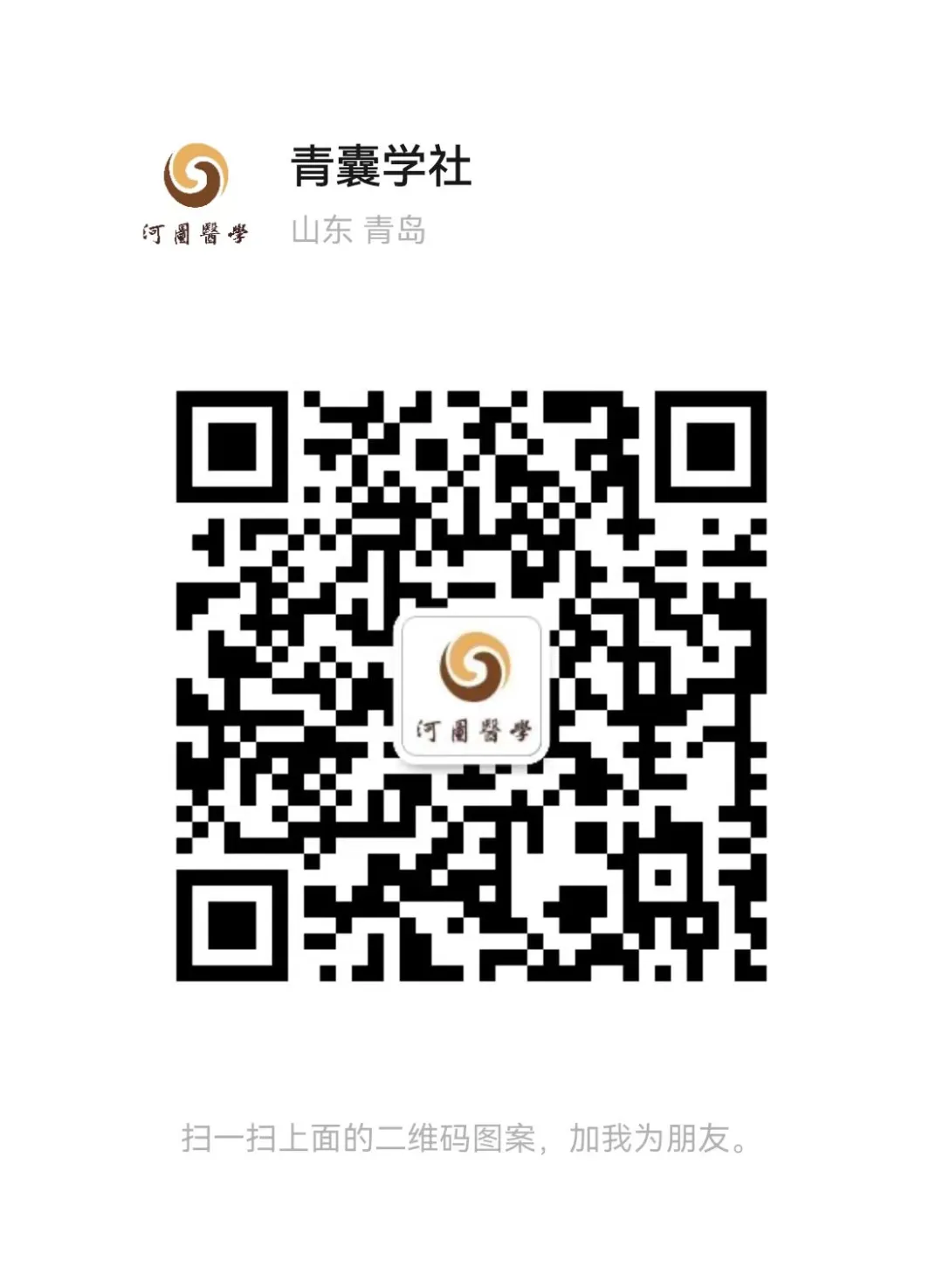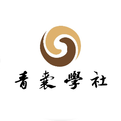
Honghua (Safflower) is an annual herbaceous plant of the Asteraceae family, known for its cold resistance, drought tolerance, and ability to withstand saline-alkaline conditions. It has a strong adaptability and is distributed in most regions of China. The dried tubular flowers of Honghua are used in medicine and are commonly employed in clinical practice as a blood-activating and stasis-resolving herb. It is effective in promoting blood circulation, regulating menstruation, and alleviating pain, making it widely used for various gynecological disorders such as amenorrhea, dysmenorrhea, and retained lochia.
Modern pharmacological studies indicate that Honghua can increase coronary blood flow, dilate blood vessels, inhibit platelet aggregation, prevent thrombosis, improve microcirculation, enhance uterine contraction strength, and lower blood lipids.
The name “Honghua” first appeared in the Song Dynasty in the book Kaibao Bencao: “Honglanhua is Honghua, growing in Lianghan and the Western Regions.” This indicates that prior to this, Honghua was mainly referred to as “Honglanhua.” The term “Honglanhua” can be traced back to the Eastern Han Dynasty in the Jinkui Yaolue where it is mentioned as “Honglanhua wine.” The Bencao Tujing records: “Its flowers are red, and its leaves resemble blue, hence the name blue.” The Bencao Mengquan also notes: “Because the leaves resemble blue, it is thus praised.”
Additionally, in ancient materia medica, Honghua is also referred to as “Huanglan,” as seen in Zhenglei Bencao: “Grows in Liang, Han, and the Western Regions. Also known as Huanglan,” and in Bencao Yuanshi: “The flowers are yellow and fluffy when they bloom, hence the name Huanglan… The flowers are red, and the leaves resemble blue, thus named Honglanhua, commonly called Honghua.”
Origin and Production Area
The mainstream view currently holds that the Honghua recorded in the materia medica should be Carthamus tinctorius L., with some studies supporting the close relative Carthamus lanatus L.
There are various theories regarding the origin of the Honghua plant. As early as 1926, scholars proposed that the cultivation of Honghua has three centers of origin: Egypt, India, and Afghanistan. Most scholars now believe that the “Fertile Crescent” along the eastern Mediterranean is the center of origin for Honghua.
The cultivation areas of Honghua are quite extensive, mainly concentrated in provinces such as Sichuan, Henan, Yunnan, Zhejiang, and Hebei, with Sichuan and Henan’s “Chuan Honghua” and “Huai Honghua” being particularly famous.
In recent years, the production of Honghua in Xinjiang has rapidly increased, accounting for about 80% of China’s Honghua market share, thus Xinjiang is also known as the new “hometown of Honghua.”
Properties and Flavor
The properties and flavor of Honghua were first recorded in the Song Dynasty, in Kaibao Bencao: “Taste is pungent and warm, non-toxic.” Similar records regarding the properties and meridian entry of Honghua can be found in Zhenglei Bencao and Zengguang Heji Ju Fang Yao Xing Zong Lun.
In the Yuan Dynasty, Tangye Bencao added descriptions of Honghua’s sweet and bitter flavors. The Bencao Pinhui Jingyao and Jiuhuang Bencao Jiao Shi Yu Yanjiu were the first to separately describe the properties of Honghua flowers and leaves.
Since Tangye Bencao first proposed the meridian entry of Honghua, the discussions on its properties and meridian entry during the Song and Yuan Dynasties were not in-depth, and later generations of physicians continued to supplement these discussions until the Qing Dynasty, when the summary became the most comprehensive.
The Ming Dynasty Bencao Huiyan supplemented that Honghua can enter the Shaoyin and Jueyin meridians.
Historical texts record that Honghua has a pungent, sweet, and bitter taste; is warm or neutral in nature; enters the heart and liver meridians; and is non-toxic.
The Chinese Pharmacopoeia records that Honghua has a pungent and warm nature; enters the heart and liver meridians, discarding the historical records of its sweet and bitter flavors and toxicity.
Harvesting and Processing
Regarding the harvesting of Honghua, later materia medica works often quote Bencao Tujing: “The gardener collects it in the morning when the dew has not dried, and continues until the flowers are exhausted.” This indicates that the harvesting of Honghua is mostly done during the summer flowering period in the early morning before the dew dries, and the flowering period is long, continuing until the flowers are exhausted.
Wai Tai Mi Yao first proposed that freshly harvested Honghua is preferable. Later works such as Han Yao Liang E Jian Bie Fa record: “The best medicinal use is with fresh bright red items; those that turn dark red after a year are useless.” Modern research shows that the flavonoids in Honghua are easily oxidized and discolored, leading to a decline in quality, thus it is advisable to use it fresh and not store it for long.
When used in medicine, multiple materia medica works such as Bencao Mengquan, Tangye Bencao, and Bencao Gangmu suggest that Honghua should be crushed before use. From a modern chemical extraction perspective, crushing is beneficial for extracting effective components, which is advantageous.
Historical records of processing methods for Honghua include wine processing, juice extraction for internal use, etc. For example, Haishang Fang and Wai Tai Mi Yao record the method of “crushing and extracting juice from Honghua.” The processing method using wine as an auxiliary material is more commonly used, as wine enhances the blood-activating and stasis-resolving effects of Honghua.
Currently, the wine processing of Honghua is no longer considered the orthodox processing method. The 2020 edition of the Pharmacopoeia of the People’s Republic of China and the Dictionary of Chinese Medicine both record that it is sufficient to remove impurities, discard stems, leaves, and calyx, and then dry it in the sun or shade, indicating that Honghua is now mostly used in its raw form.
Uses
Dyeing
Before the invention of synthetic dyes, Honghua was one of the important dyes in the world. After being introduced to China by Zhang Qian during his mission to the Western Regions, it was initially processed into a red dye called “Yanzhi” (also known as “Yanzhi” or “Yanzhi”), mainly used for coloring textiles and in cosmetics due to its bright color and attractive hue.
Medicinal Use
The medicinal use of Honghua can be traced back to the Eastern Han Dynasty in Zhang Zhongjing’s Jinkui Yaolue, which states, “For women with sixty-two types of wind, causing abdominal blood and qi pain, Honglanhua wine is the remedy,” indicating that Honglanhua wine can treat women’s chest and abdominal pain.
The Tang Dynasty Xinxiu Bencao records that it can treat locked jaws, blood clots, and various postpartum ailments, indicating that its application is not limited to gynecological diseases.
Wai Tai Mi Yao states, “Crush and take the juice of cooked Honghua to treat all swellings.”
The Song Dynasty Kaibao Bencao records that Honghua can treat postpartum lochia retention, abdominal cramping, stillbirth, and bleeding caused by toxic substances.
The Ming Dynasty Bencao Huiyan summarizes its applications: “These are all symptoms during labor that cannot be treated without Honghua; … these are all postpartum symptoms that cannot be resolved without Honghua; … these are all symptoms of disharmony of qi and blood that cannot be adjusted without Honghua.”
The Ming Dynasty Yao Jian points out that “excessive use of Honghua can lead to uncontrolled bleeding,” and many later works mention precautions against excessive use, indicating its significant clinical guidance on the dosage of Honghua.
Li Shizhen in Bencao Gangmu states, “Blood is generated in the pericardium… the juice of Honghua is similar to blood, thus it can promote blood circulation and regulate women’s menstruation,” suggesting that the juice extracted from Honghua resembles blood, inferring its efficacy in activating blood and regulating menstruation.
The Qing Dynasty Bencao Zhengyi states, “It is because of its deep red color and light, dispersive quality that it specifically enters the blood, serving to unblock meridians and activate blood flow.”
Contraindications
The contraindications and adverse reactions of Honghua were only mentioned in medical texts from the Ming and Qing Dynasties, with no dedicated records before the Ming Dynasty. The Ming Dynasty materia medica Bencao Huiyan states, “Excessive use of Honghua can cause uncontrolled bleeding.” The Ming Dynasty Yizong Bidu and Bencao Zhengyao, as well as the Qing Dynasty Bencao Cuoyao, all reference this viewpoint. The Qing Gu Songyuan Yijing states: “Pregnant women should avoid it.” The Qing Depai Bencao adds: “Do not overuse postpartum.” In summary, excessive use can lead to uncontrolled bleeding, resulting in death; thus, it is contraindicated for pregnant women and those postpartum.
Zanghonghua (Saffron)
Honghua and Zanghonghua differ by only one character, leading to common misconceptions that they are the same. Some people mistakenly consider the saffron cultivated in Tibet as Zanghonghua. In fact, these are two completely different plants. Honghua is a commonly used and affordable medicinal herb, while Zanghonghua is a precious medicinal herb with a limited supply and high price, often substituted with Honghua. Both Honghua and Zanghonghua are traditional Chinese medicines for activating blood and resolving phlegm, with effects of promoting blood circulation, regulating menstruation, and alleviating pain. They are used for irregular menstruation, amenorrhea, dysmenorrhea, postpartum fatigue, and injuries from falls.
Zanghonghua Crocus sativus L. is a bulbous herbaceous plant of the Iridaceae family, also known as saffron or Zanghonghua, and is a rare medicinal plant. Its medicinal part is the dried stigma, which is also a natural raw material for daily chemical dyes and food flavoring products. Its components include crocin and its derivatives, polysaccharides, β-carotene, vitamins A, B1, B2, C, K, and a large number of essential trace elements such as selenium, magnesium, and calcium.
Medicinal History of Zanghonghua
Zanghonghua originated in Southern Europe and Asia Minor, with a history of several thousand years. The earliest record dates back to around 1550 AD in the Ebers Papyrus, where ancient Egyptians used Zanghonghua to treat gastrointestinal diseases. According to ancient Iranian medical texts, Zanghonghua can treat headaches, toothaches, has diuretic, calming, beautifying, aphrodisiac, detoxifying, hypotensive, and blood-activating effects. In India, Zanghonghua has been used by women since ancient times for beauty and anti-aging. It is mentioned in the Song of Solomon and in Egyptian papyrus as a fragrant herb.
Zanghonghua has been used in China since before the Yuan Dynasty, with the famous Bencao Gangmu from the 10th century mentioning its medicinal use: “Zanghonghua, from the Western regions, is the same as Honglanhua. In the Yuan Dynasty, it was used for food. Its taste is sweet, neutral, and non-toxic. It treats heart depression, stagnant qi, activates blood, and prolonged use brings joy to the heart, also treating palpitations.” The Bencao Pinhui Jingyao also records that “Zanghonghua mainly widens the chest, opens the stomach for food intake, and prolonged use nourishes the lower source, improves complexion, and treats febrile madness.”
In the late Yuan and early Ming Dynasties, the Huijiao Yaofang included many prescriptions using Zanghonghua, treating not only menstrual regulation, calming pregnancy, stopping bleeding, and relieving pain, but also stroke paralysis, facial droop, purple-white wind, joint pain, and dizziness.
Medicinal Value and Pharmacology of Zanghonghua
The earliest literature mentioning Zanghonghua dates back to the 11th to 10th centuries in the Song of Solomon by King Solomon of the Jewish nation. In China, Zanghonghua first appeared in Bencao Gangmu Shiyi, and in Bencao Pinhui Jingyao it is referred to as a synonym for saffron; Bencao Gangmu officially names it Zanghonghua, while Lan and Saffron are its aliases.
Bencao Gangmu lists “Honglanhua” and “Zanghonghua” as two different medicinal herbs, but the illustrations attached to them resemble the Asteraceae plant Honghua, indicating that at that time, the sources of the two types of Honghua were not clearly understood.
It was not until the Qing Dynasty that Zhao Xueming in Bencao Gangmu Shiyi provided a basic understanding of Zanghonghua.
Zanghonghua has various direct and indirect pharmacological effects on the human body, mainly manifested in uterine contraction, affecting the circulatory system, enhancing immunity, protecting the liver and gallbladder, and inhibiting tumors.
Zanghonghua has always been a traditional precious medicinal herb in China, with strong effects of activating blood, resolving stasis, and relieving depression. Modern pharmacological studies have confirmed that Zanghonghua is effective in improving myocardial blood supply and oxygenation, as it contains various glycosides that can significantly increase blood flow in the coronary arteries, regulate blood circulation, cool blood and detoxify, beautify and resolve stasis, combat fatigue, and delay aging. Recent studies have found that Zanghonghua has good anti-cancer activity with no toxic side effects.
Protection of Medicinal Materials
The identification and protection of Zanghonghua are complicated due to its low yield, multiple processing steps, and reliance on imports, leading to high market prices. In contrast, Honghua has a relatively high yield, simple processing, and local sources, resulting in a significant price difference, with Zanghonghua being 80 to 100 times more expensive than Honghua. The similarities in traditional medicinal effects of “activating blood, resolving stasis,” and “treating women’s amenorrhea and postpartum stasis abdominal pain” have caused confusion in their use. In fact, the efficacy of the two is quite different, with Zanghonghua being significantly more effective than Honghua in treating stroke, paralysis, and hemiplegia. However, to profit, counterfeit products of Zanghonghua often appear in the market, commonly including Honghua, chrysanthemum flower threads, corn silk, lotus silk, and daylily, which are difficult to distinguish due to their similar appearance.
Zanghonghua is an extremely precious medicinal material, known as “plant gold.” In recent years, Zanghonghua has been listed as one of the 39 key traditional Chinese medicines for national development.
Although Zanghonghua has been successfully cultivated in Zhejiang, Shanghai, Guangxi, and Xinjiang, the current supply of Zanghonghua still cannot meet market demand, and it remains reliant on imports.
In recent years, researchers have made significant breakthroughs in the artificial cultivation of Zanghonghua. The relative content of crocin in artificially cultivated Zanghonghua is slightly higher, while the relative content of crocetin glycosides and crocetin in natural Zanghonghua is higher.

He Tu Medical Theory and Prescription System Collection
Welcome to exchange, consult, and discuss
Recommended Reading
Exploring the Medicinal Properties of Cheqian Cao (Plantago) and Cheqianzi (Plantago Seed)Exploring the Medicinal Properties of Muxiang (Aucklandia), Chenxiang (Aquilaria), Qingmuxiang (Aucklandia), and Wuyao (Lindera)Exploring the Medicinal Properties of Bajitian (Morinda Root), Yinyanghuo (Epimedium), and Xianmao (Curculigo)Exploring the Medicinal Properties of Yuan Zhi (Polygala) and Changpu (Acorus) and Jiu Jie Changpu (Acorus)Exploring the Medicinal Properties of Ruxiang (Frankincense) and Mo Yao (Myrrh)Exploring the Medicinal Properties of Xiaobai (Allium) and Cong (Allium) and Jiu (Allium)Exploring the Medicinal Properties of Rou Congrong (Cistanche) and Suoyang (Cistanche)Exploring the Medicinal Properties of Shayuanzhizi (Tribulus) and Cizhi (Tribulus)Exploring the Medicinal Properties of Baijiangcan (Silkworm) and Can Sha (Silkworm Sand)Exploring the Medicinal Properties of Fuping (Lemna) and Chan Tui (Cicada Slough)Exploring the Medicinal Properties of Niuxi (Achyranthes) and Huai Niuxi (Achyranthes) and Chuan Niuxi (Achyranthes)Exploring the Medicinal Properties of Shaoyao (Peony), Bai Shaoyao (White Peony), and Chi Shaoyao (Red Peony)Exploring the Medicinal Properties of Huangjing (Polygonatum) and Yuzhu (Polygonatum)Exploring the Medicinal Properties of Baizhi (Angelica) and Xixin (Asarum)Exploring the Medicinal Properties of Suanzaoren (Ziziphus) and Baiziren (Platycladus) and Cebaiye (Platycladus)Exploring the Medicinal Properties of Dihuang (Rehmannia), Sheng Dihuang (Raw Rehmannia), Shou Dihuang (Cooked Rehmannia), and Xian Dihuang (Fresh Rehmannia)Exploring the Medicinal Properties of Baihe (Lily) and Zhi Mu (Anemarrhena)Exploring the Medicinal Properties of Buguzhi (Psoralea) and Gusuibu (Euphorbia)Exploring the Medicinal Properties of Chuangwei (Corydalis) and Yimucao (Leonurus)Exploring the Medicinal Properties of Qinghao (Artemisia) and Yincheng (Artemisia)Exploring the Medicinal Properties of Fangji (Stephania) and Fangji (Stephania)Exploring the Medicinal Properties of Jixu (Corydalis) and Danggui (Angelica)Exploring the Medicinal Properties of Shenzhu (Ziziphus) and Danggui (Angelica)Exploring the Medicinal Properties of Jiegeng (Platycodon) and Jiegeng (Platycodon)Exploring the Medicinal Properties of Jiegeng (Platycodon) and Jiegeng (Platycodon)Exploring the Medicinal Properties of Jiegeng (Platycodon) and Jiegeng (Platycodon)Exploring the Medicinal Properties of Jiegeng (Platycodon) and Jiegeng (Platycodon)

